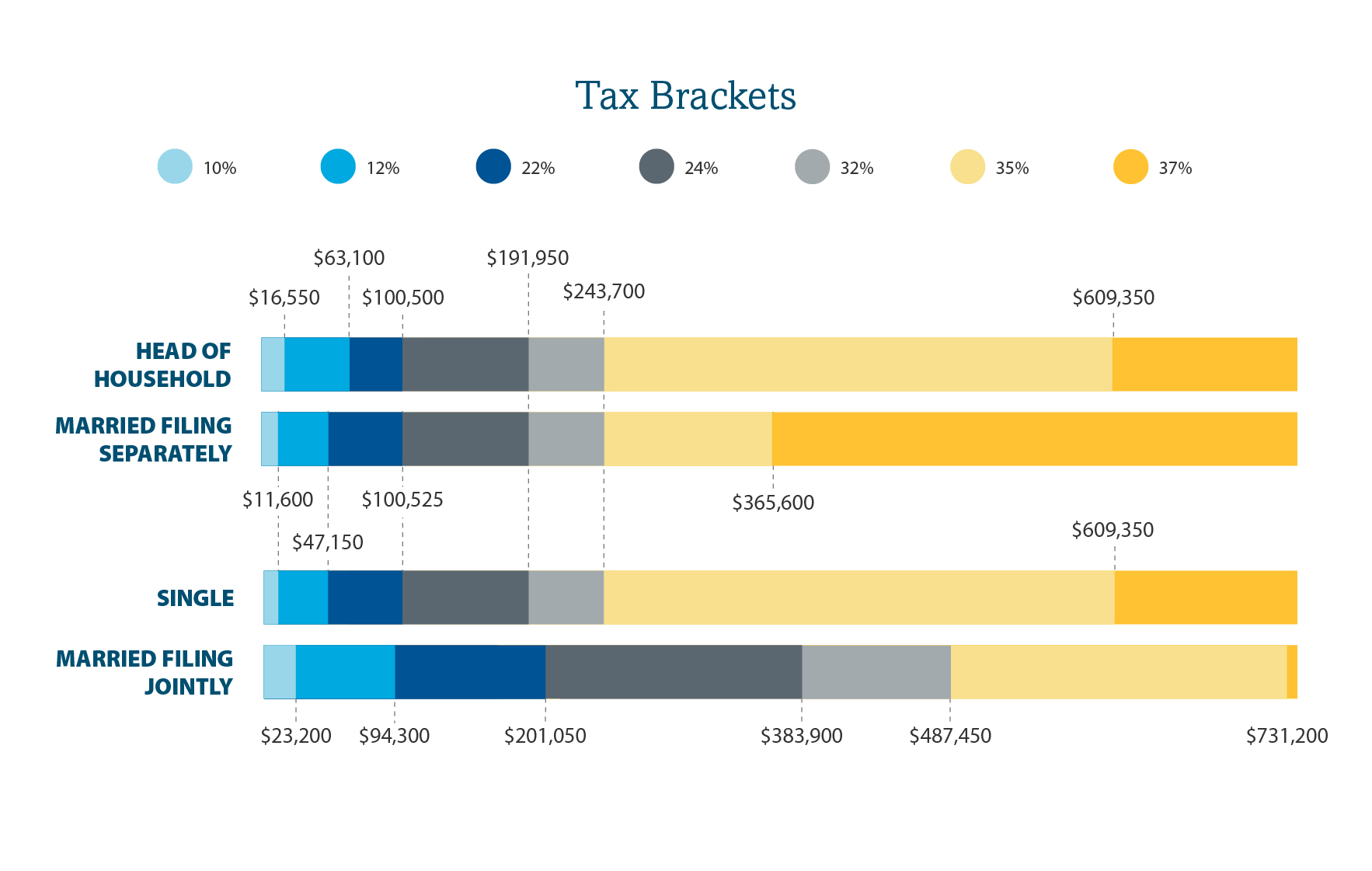

Every year, the IRS makes adjustments to its tax provisions, taking various economic factors including inflation into account. And as we’re all keenly aware, this year’s inflation rates have reached record highs, leading the IRS to announce more significant tax changes than usual for 2024.
These changes are not tax cuts – instead, they aim to prevent the phenomenon known as “bracket creep” and keep taxpayers in the same boat. For example, some people will get cost of living wage increases to offset inflation which may push them over the threshold into a higher tax bracket. The IRS adjustments aim to keep that from happening. Ultimately, the goal is to keep inflation from being an invisible factor that increases people’s tax burden and reduces their spending power.
It’s important to note that these adjustments apply to tax year 2024 (i.e., taxes filed in early 2025). You may want to bookmark this page to revisit toward the end of 2024 to prepare for the 2025 tax filing season.
Here’s an overview of the main changes and what these updates might mean for you.
Let’s talk tax brackets
One of the changes that will make a big impact is the updated tax brackets for the 2024 tax year. The United States has a progressive tax system, meaning that people’s money is taxed at higher rates as their income increases. Therefore, we have seven tax brackets associated with different income ranges.
People often make the understandable, but incorrect, assumption that all their money will be taxed at the percentage of whichever bracket they fall into. Luckily, this is not the case. Tax brackets simply show the rates that each slice, or portion, of your money will be taxed at.

For example, let’s take a look at the case of a hypothetical single taxpayer named Sara who makes $80,000 in taxable income a year. Based on the new 2024 brackets above, the highest rate Sara will pay based on her wages is 22%. The first $11,600 will be taxed at 10%, the next $35,550 (the difference between $11,600and $$47,150) will be taxed at 12% and the remaining $32,850 (the difference between $$47,150 and her total income of $80,000) will be taxed at 22% - her highest percentage rate. When doing the math, Sara will owe approximately 16% of her taxable income to the IRS. It’s also important to remember that this rate is for federal taxes and does not take into account state or local taxes Sara may owe as well.
The beauty of the updated brackets for the 2024 tax year is that by bumping the ranges up, more of people’s income will be taxed at lower rates. However, if you get a raise in 2024, keep in mind that extra money will increase your taxable income and may affect which bracket you fit into.
“We’ll take a standard deduction for 2024, Alex”
Okay okay… so life’s not a game of Jeopardy, but many taxpayers will choose to take the standard deduction on their 2024 taxes. The standard deduction is a set amount that you’re able to subtract from your annual income to reduce how much of your income is subject to taxation. For the 2024 tax season, the standard deduction will increase to $14,600 (up $750) for single taxpayers and married individuals filing separately; $29,200 (up $1,500) for married couples filing jointly; and $21,900 (up $1,100) for heads of household. There are additional standard deductions for people over age 65 or blind. It’s best to work with a tax professional to determine if the standard deduction or itemized deduction is the best bet for you.
Benefits — to the Max
If you’re not already taking advantage of employee benefits like retirement accounts, health flexible-spending accounts or commuter accounts, 2024 might be the year to do so. These types of accounts incentivize workers to prepare for their future by taking money out of their checks pre-tax to be set aside for dedicated purposes. Since this money comes out before tax, it’s another way to reduce your taxable income.
For 2024, the IRS is increasing the amount that employees can route into these accounts. Individuals will be able to contribute $23,000 (up $500) to their 401k(s) and $7,000 (up $500) to their IRAs.
Fund Your 401(k) on a Cup of Coffee a Day
With these changes, it makes sense to max out your contributions to your benefits accounts if you’re able – but only after you understand exactly how this money needs to be used, and by when.
While the changes to tax brackets, the standard deduction and employee benefit contribution limits are getting the most air time, the IRS made many other changes which might impact what the 2024 tax year looks like for you. Other updates will apply to MSA accounts, the Alternative Minimum Tax, the Earned Income Tax Credit, the Foreign Earned Income Exclusion, Estate Tax, Gifts, the Adoption Tax Credit and more. For all the details, read the IRS’s official announcement.
At Rockland Trust, we understand that tax season can cause headaches. Tax policies are ever-changing, and our team is here to walk you through how these changes might affect your life and finances. Check out our other resources on taxes on our Learning Center, or pop into your local branch to speak with a member of our team today.
Get the latest financial tips and advice by signing up to receive our emails.
Rockland Trust Online Banking gives you a variety of services that help you use and manage your accounts, whenever and wherever you want.
* indicates a required field.
Rockland Trust makes it easy to manage all of your accounts with our simple online portals.
Rockland Trust gives you a variety of services that help you use and manage your accounts, whenever and wherever you want.
* indicates a required field.



